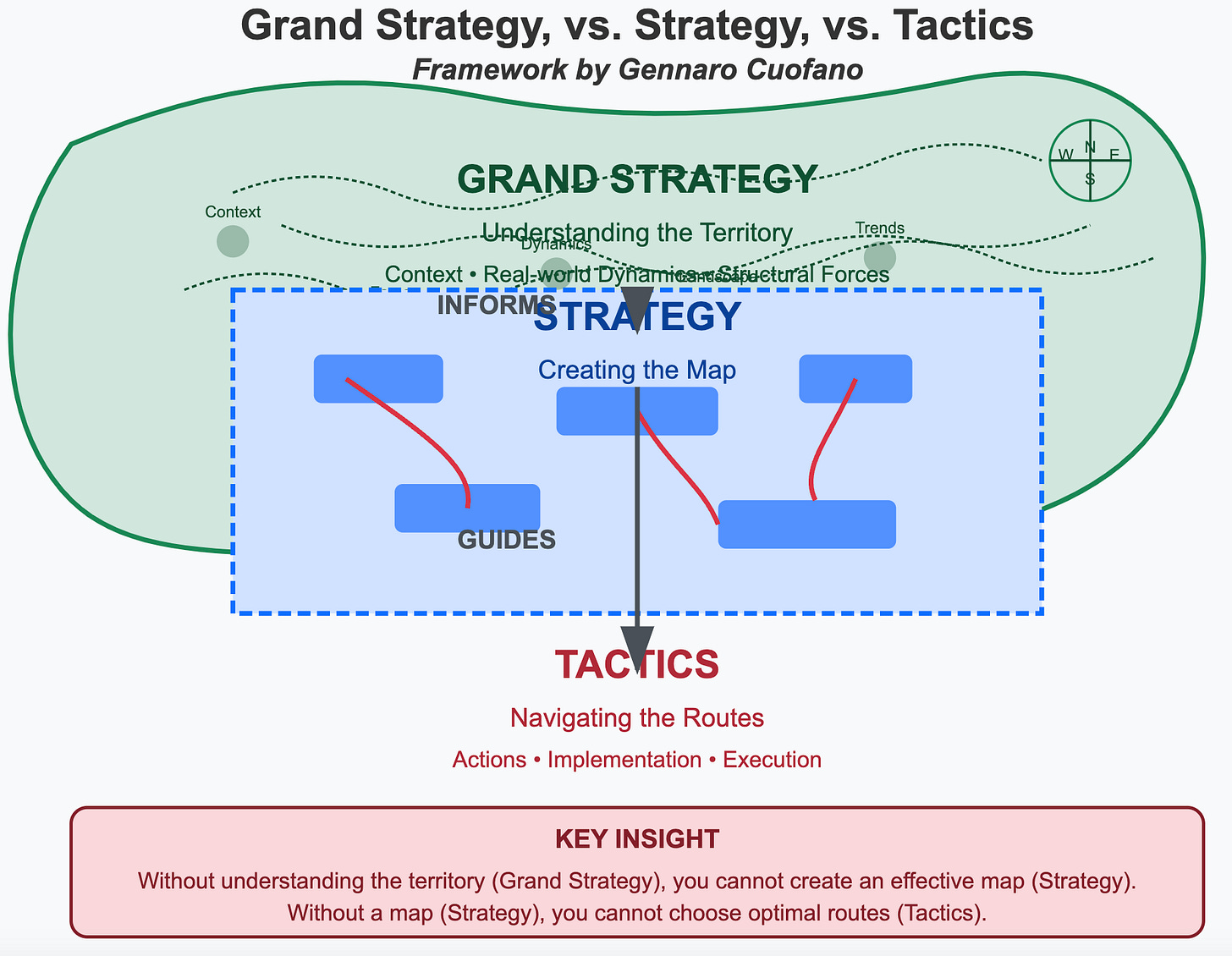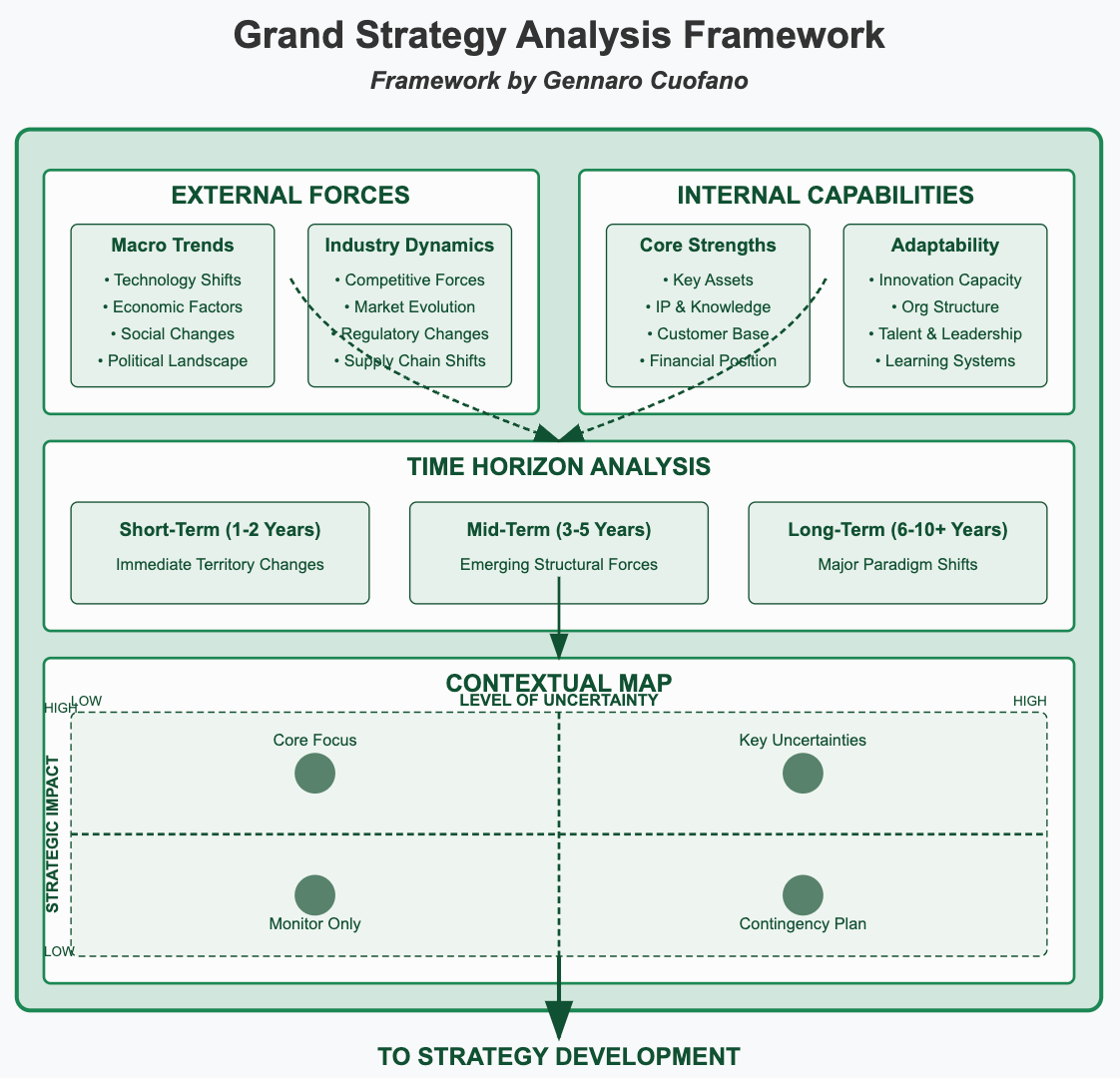Grand Strategy Framework
Understanding the territory is critical in the business world as it helps you discover the “rules of the game” you’re part of.
That’s what grand strategy is for.
I’ve explained that in detail in Grand Strategy.
I can’t stress enough how understanding the underlying structure - underneath your feet - or the existing, developing, changing, shifting context to position yourself in the right place or at least avoid lethal traps hidden in the territory is critical and the most valuable skill as a business person.
Again, that’s a Grand Strategy.
You can build your map (strategy) and derive your possible routes (tactics) from there.
Let’s focus on this issue on the grand strategy side.
Where do you start to define where you are in the world?
Mapping The Territory
To map out the context, we need to look at:
Contextual Adaptability
External Forces (Understanding the Environment)
Internal Capabilities (Assessing Strengths & Adaptability)
Time Horizon Analysis (Short, Medium, and Long-Term Planning)
Strategic planning must be structured across different timeframes:
Short-Term (1-2 Years): Immediate territory changes, tactical responses.
Mid-Term (3-5 Years): Structural shifts emerging in the market.
Long-Term (6-10+ Years): Major paradigm shifts that require transformational strategies.
Understanding these timeframes ensures strategies are proactive rather than reactive.
Contextual Mapping
Based on strategic impact and level of uncertainty, define the core focus vs. contingency plan.
To build a map (which will change with the territory/context) of where the core focus needs to be and where you need to monitor/have a contingency plan instead.





